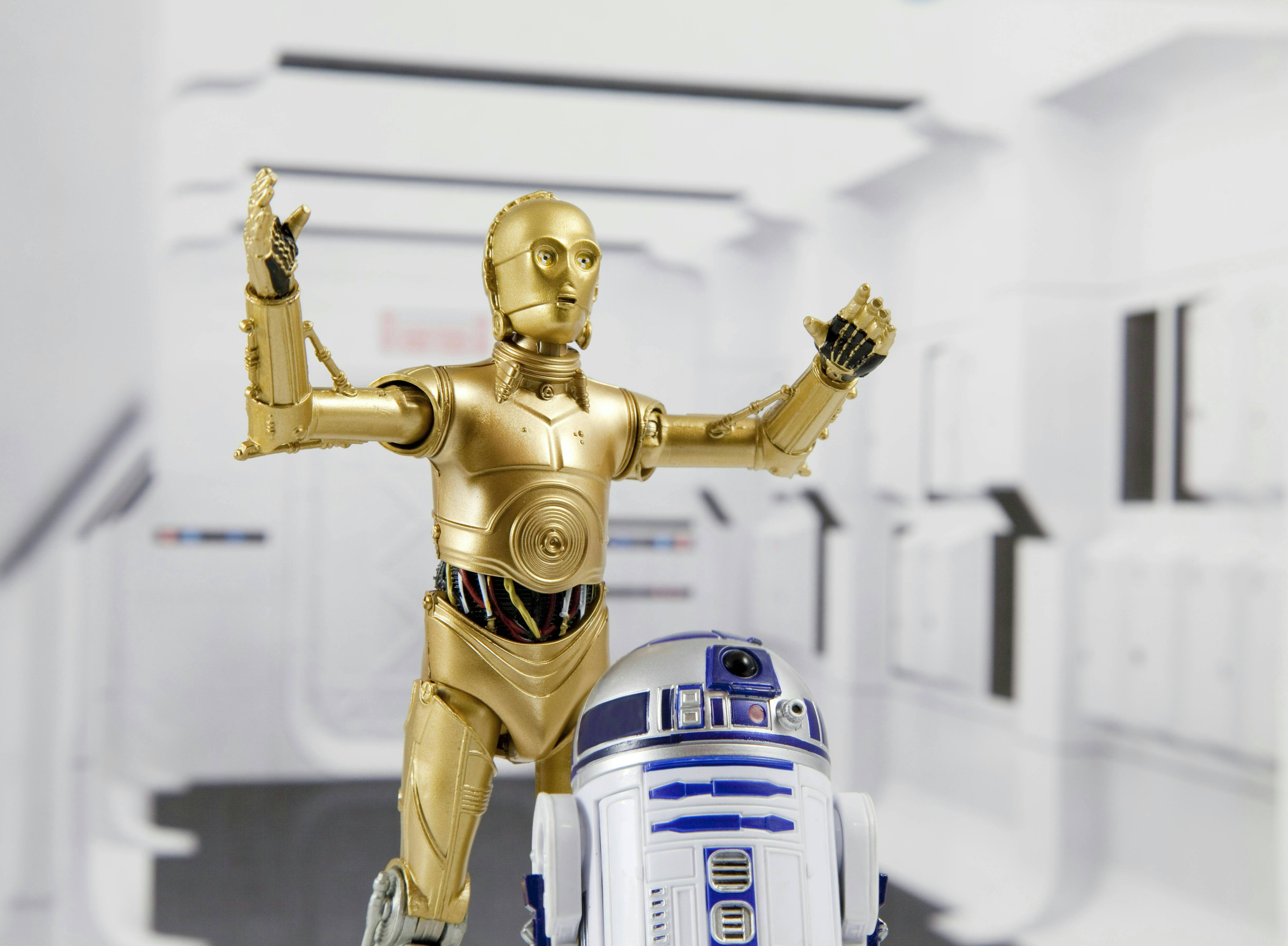2025 robotics honoree shares insights on education, AI and the future of automation
Key highlights
- The recognition of Dr. Peter Corke with the Engelberger Award for his educational contributions underscores the importance of accessible robotics knowledge in advancing the industrial robotics field.
- Corke's early work in automating mining equipment and farm vehicles highlights the foundational role of control engineering in the development of autonomous industrial machinery.
- The discussion around the potential spillover of low-cost, high-torque actuation technology from humanoid robotics could significantly impact the design and cost-effectiveness of industrial robot arms.
Dr. Peter Corke, distinguished professor emeritus at Queensland University of Technology, is the 2025 recipient of the Joseph F. Engelberger Award in the Education category. Known for his open-source Robotics Toolbox software, "Robotics, Vision and Control" books and the Robot Academy online video series, Corke has empowered generations of engineers with accessible robotics education and groundbreaking research.
The Engelberger Robotics Awards are named after the late Joseph F. Engelberger, known as the founding force behind industrial robotics. Since 1977, these awards have been given to more than 140 robotics leaders from around the world for excellence in technology development, application, education and leadership.
The winners are selected by a panel of industry leaders based on all present and past nominations from the industry and are voted on by the past chairs of the Robotic Industries Association (RIA), which became part of the Association for Advancing Automation (A3) in April 2021. A3 administers the award, and each winner receives a $5,000 honorarium, a commemorative medallion and a plaque. Along with Corke, Stuart "Stu" Shepherd won the 2025 Engelberger Award for Leadership.
“Peter’s educational resources and research have shaped the work of robotics engineers for many years and led to immeasurable industry advancements,” said Jeff Burnstein, president of A3. “Stu’s leadership and foresight over the past 46 years have been instrumental in transforming manufacturing.”
Corke co-founded the Queensland University of Technology robotics discipline, which has grown to be one of the largest robotics research and teaching groups in Australia. Prior to that, he worked as a researcher for the Commonwealth Scientific and Industrial Research Organization (CSIRO), the Australian national research agency, and then as the founding director of the CSIRO Autonomous Systems Lab.
His early work focused on the automation of underground and surface mining equipment and farm vehicles, Internet of Things (IoT), visual-inertial navigation of flying and underwater drones and mobile manipulation. He holds a number of patents and is chief roboticist at robotic-packing company Lyro Robotics and technical advisor to drone-mapping company Emesent.
He is a fellow of the Institute of Electrical and Electronics Engineers (IEEE); the Australian Academy of Technological Sciences and Engineering; and the Australian Academy of Science. He was the editor-in-chief of “IEEE Robotics & Automation Magazine” and has served pm advisory and editorial boards for numerous robotic publications.
“Being recognized with an Engelberger Award for my contributions to robotics education is easily one of the biggest highlights of my career,” Corke said. “I’ve always believed that making robotics knowledge accessible to all is crucial for advancing the industry.”
On May 14, an awards dinner honoring Corke and Shepherd will be held during Automate 2025 in Detroit. Tickets for the awards ceremony, which include a cocktail reception and dinner, may be purchased when registering for Automate 2025.
At the Automate Show, more than 800 exhibitors will display the latest in robotics, vision systems, AI and motion control across more than 320,000 sq ft. Anyone 12 and older can attend the free show. A paid industry conference will coincide with the free show and is slated to feature more than 200 speakers.
What does the Engelberger Award symbolize to you, in terms of achievement or recognition?
Peter Corke: An awful lot. It’s the pinnacle of robotics awards, and the fact that it comes from an industry association is, to me, extra special. It shows that the industry sees education as important to the growth of robotics, and it values my contribution to that education.
But I didn’t set out to be a robotics educator. That might sound odd from a professor, but I did the professor thing relatively late in my career. Before that I spent 25 years working for a national lab on largely applied research.
The open-source Robotics Toolbox software is the output of an untold number of Sundays. The first edition of my book was written in a year off between jobs.
Even after I became a professor, much of this work continued as a side gig. A university is interested, perhaps justifiably, in teaching the students on the campus, rather than non-paying students off-campus and in other countries. My first massive open online courses (MOOCs) taught more students than the whole university’s first-year intake, and the online Robot Academy teaches students anywhere anytime. That’s the beauty and the power of books and online teaching resources—they teach people 24x7 at their own pace. I’m happy that this award recognizes the global impact of this body of work.
What I find fascinating is that, to teach very large numbers of people, all around the world, you don’t need to be a university or even an organization. It can be done by a single, definitely passionate, person with a laptop—witness the Khan Academy and many other YouTube educational channels.
Joe Engelberger created a new industry, that went on to radically transform the manufacturing industry. Yet we don’t really have good and agreed courses for teaching people about robotics. Computers came maybe a decade earlier that robots, and almost every university in the world teaches computer science and has for quite some time. Robotics, with a few exceptions, still doesn’t have this. We teach mechanical engineering, electrical engineering and computer science, but none of these covers all we need for robotics.
What got you interested in the field of robotics? Was it early on or something you developed through your studies/career?
Peter Corke: It wasn’t through science fiction. I read some but not a lot. As a kid, I was interested in electronics, and it just seemed the obvious thing was to go and study electrical engineering at university.
During my study, I built my first microprocessor kit and hand-assembled my own small programs—that began a life-long love of programming, transitioning through Fortran, C, MatLab and Python.
Of all the subjects I studied, it was control theory that really engaged me. Simplistically, it’s about how you make some plant, an electrical circuit, a chemical plant, or a machine with known dynamics behave the way you want it to.
Of course, there are lots of additional wrinkles or complexities you can add to that simple definition. What if the plant has unknown dynamics or time-varying dynamics? In my first job, at the same university, I was drawn into real-time computing and control, which connected code to things happening in the real world. I found that very compelling.
In the lab, we were controlling small-scale physical systems, ball on a beam, water levels in connected tanks and eventually a small robot for an open day demo.
What recent robotics developments are of the most interest to you?
Peter Corke: The sudden boom in humanoid robots interests me. Humanoids have been the topic of research since the 1980s, starting in Japan, but in the past year or so investor interest has been intense. Why now?
I think humanoids are a fork in the road for robotics. Many industrial tasks once done by humans are now done by manipulator arms with superhuman speed, strength and accuracy. For those tasks I don’t see the value-add for humanoids; they will be slower, weaker and less accurate than a current industrial arm.
I suspect many tasks don’t need two arms, and we’re burning power to stay upright when a manipulator arm is attached to a fixed pedestal. I think robot arms are still more expensive than they should be, but the new high-torque low-cost actuation technology developed for humanoids may spill over into the industrial-arm world, or at least provide some stiff price competition.
For industrial applications where work is currently done by people, where there is a lot task diversity for workers, where workers need to move around the facility, then humanoids may provide serious competition compared to autonomous mobile robots (AMRs) and conveyor belts. I say “may” because AMRs and conveyor belts are mature technologies in wide use, and humanoids are still a promise.
For domestic applications, humanoids do make a lot of sense. Automate every machine and process in the house, or drop in a humanoid that can use all the tools we already have—saucepans, spoons, dish clothes. It could even drive your car.
This was the thinking from the early Japanese researchers way back in the 1980s, but the technology just wasn’t mature enough back then. But, for humanoids in the house, particularly looking after elderly people, which is the commonly cited use case, safety will be a big issue. Consider a humanoid robot helping an old and frail person, and the robot loses its balance and falls on them—the outcome won’t be good.
For humanoids, I see some parallels with the early days of self-driving cars. The initial investor gold rush transitioned, after much longer than people were thinking it would, into a very small number of companies who are getting close, but Level 4 autonomy isn’t an everyday thing yet. So many promised delivery dates are now in the past. I’m not sure if anybody is making money yet, and there is still a heavy reliance on remote human backup drivers.
Can you talk a little about where the public perception and the industrial perception of robots overlap and where they split?
Peter Corke: The public perception of robotics is mostly formed from fiction: books and movies. This tends to put two ideas into the public mind. The first is that robots are far more capable and humanlike than they really are. Witness R2-D2 fixing an X-wing or the robot in “Robot & Frank”—I love this movie—looking after Frank. But C-3PO, R2-D2 and the “Robot & Frank” robot are people dressed up in metal suits, so no wonder they seem intelligent and capable (Figure 1).
The second public perception is that robots will destroy us, most famously depicted in the “Terminator” movies. The first version of this story was written by Karel Čapek more than 100 years ago, in the 1920 play, “Rossum’s Universal Robots.”
You could argue it’s not that dissimilar to “Frankenstein,” published more than 100 years earlier in 1818, in which the creation wants to destroy its creator. Before that, maybe you trace it back to the Jewish legend of the Golem.
In recent years YouTube reinforces the first idea. There are lots of videos of increasingly capable humanoid and quadruped robots. One problem with some of these videos is that sometimes the robot is teleoperated or the video is sped up, which again gives the public an overestimated view of robot capability.
The public perception of industrial robots is quite ill-formed. Maybe a documentary with long lines of orange robots building cars. It probably doesn’t look as exciting as the science-fiction future, but people might be comforted that the chance of a robot uprising is lower.
An industrial user is going to care about cost, payload, speed, support and ease of integration. The technology, the shape and the form are less important than what it can do for the bottom line.
Get your subscription to Control Design’s daily newsletter.
While robots will always be amazing marvels of machine engineering in their own right, they also have become components in industrial equipment. What are some of the more intriguing examples of robot integration in machinery or work cells that you've seen?
Peter Corke: I’m not sure I’ve seen enough of these systems to comment, and my interest has largely been about robots in the wild, not in industrial work cells.
Robotics is an integrative discipline, and we can think of it as a massive toolkit of technologies, from motion control to sensing and planning. In that sense robotics appears in many places where you wouldn’t say it was a robot, such as driver assistance in cars or drones. There is one school of thought that success in robotics is when robotic technology is everywhere, embedded in everything, and we no longer notice it.
But it goes both ways. Robotics takes technology from other fields and applies it. In the 1990s, robotics researchers discovered the Sick laser scanners used for machine protection and figured out how to get data out of them that could be used for vehicle localization. That was a massive stimulus to the fields of simultaneous localization and mapping (SLAM) and path planning, which are mature and in wide use.
Many other companies piled in to develop laser scanners, and that received another stimulus, multi-beam lidar, from the needs of self-driving cars. Robotics embraced the Kinect sensor designed for gaming and figured out how to use it for proper 3D-world modeling.
With the perceived push toward more autonomous manufacturing capabilities, will the collaborative ability of a cobot become redundant and unnecessary, or do collaborative robots have a role in manufacturing applications that run lights-out 24/7?
Peter Corke: I think we will see these two approaches—fully autonomous lights out and collaborative—continue to coexist for some time to come. The choice will depend on product complexity, product volume and labor and capital cost.
“Collaborative robot” is a rather loose term, but we may see current ideas extended to collaborative humanoid robots—humans and humanoids working together on physical tasks.
What is the next big thing in robotics?
Peter Corke: The obvious megatrend is artificial intelligence (AI), and that’s changing everything. AI coding assistants are transforming the way we create software, and software is a major component of any robot system. AI is replacing traditional control systems, PID controllers and the like, with learnt controllers. AI solves, in one hit, the problems of understanding what the user wants, via text or speech, and understanding what’s in the world. We are making good progress in connecting that with figuring out how to move—one network acting as the robot’s brain covering commands and perception into motion.
Why should younger generations be more attracted to STEM curricula, specifically robotics, in the future?
Peter Corke: Once upon a time, I would have suggested that studying STEM would be the pathway to a wide range of job opportunities in the engineering and the sciences, but the evidence-based thinking and problem-solving mindset is widely applicable to many other careers. To me, robotics is not about training kids for a job in robotics, but, because it provides a great motivational example, letting students put their learning into software that makes a machine move and do a useful thing. And that is very rewarding. It provides a use case for learning, which always encourages more learning.
But if we’re talking about students who are age 10, they will go to university and be out in the world in the late 2030s. Frankly, I don’t know what that world will look like.
Some folks are talking about artificial general intelligence (AGI) arriving later this decade. Even if it doesn’t—and there will be lots of semantic arguments about what intelligence is—the power of current AI and rate of improvement are truly impressive.
I think we will need to reassess what we teach. Things we once held as being very important, arithmetic and spelling, are no longer seen as such. Does the same happen to engineering design? Do we still need people to frame the problem and sanity-check the results? Do we assess the students or the students working with AI as an effective single entity?
Articles and interviews with past Engelberger Award winners
- 2015: Raffaello D'Andrea
- 2017: Daniela Rus
- 2018: Esben Østergaard
- 2022: Bertil Thorvaldsson, Michael P. Jacobs
- 2023: Roberta Nelson Shea, Jeff Burnstein
- 2024: Joe Gemma
Next steps
- Investigate Dr. Peter Corke's open-source Robotics Toolbox and Robot Academy online video series to explore potential tools and educational resources relevant to industrial machinery control.
- Research the advancements in high-torque, low-cost actuation technologies being developed for humanoid robots to assess their applicability in improving the performance and affordability of industrial arms.
- Consider the implications of integrating AI-driven control systems in future industrial automation projects, moving beyond traditional PID controllers.
About the Author
Mike Bacidore
Editor in Chief
Mike Bacidore is chief editor of Control Design and has been an integral part of the Endeavor Business Media editorial team since 2007. Previously, he was editorial director at Hughes Communications and a portfolio manager of the human resources and labor law areas at Wolters Kluwer. Bacidore holds a BA from the University of Illinois and an MBA from Lake Forest Graduate School of Management. He is an award-winning columnist, earning multiple regional and national awards from the American Society of Business Publication Editors. He may be reached at [email protected]

Leaders relevant to this article:



